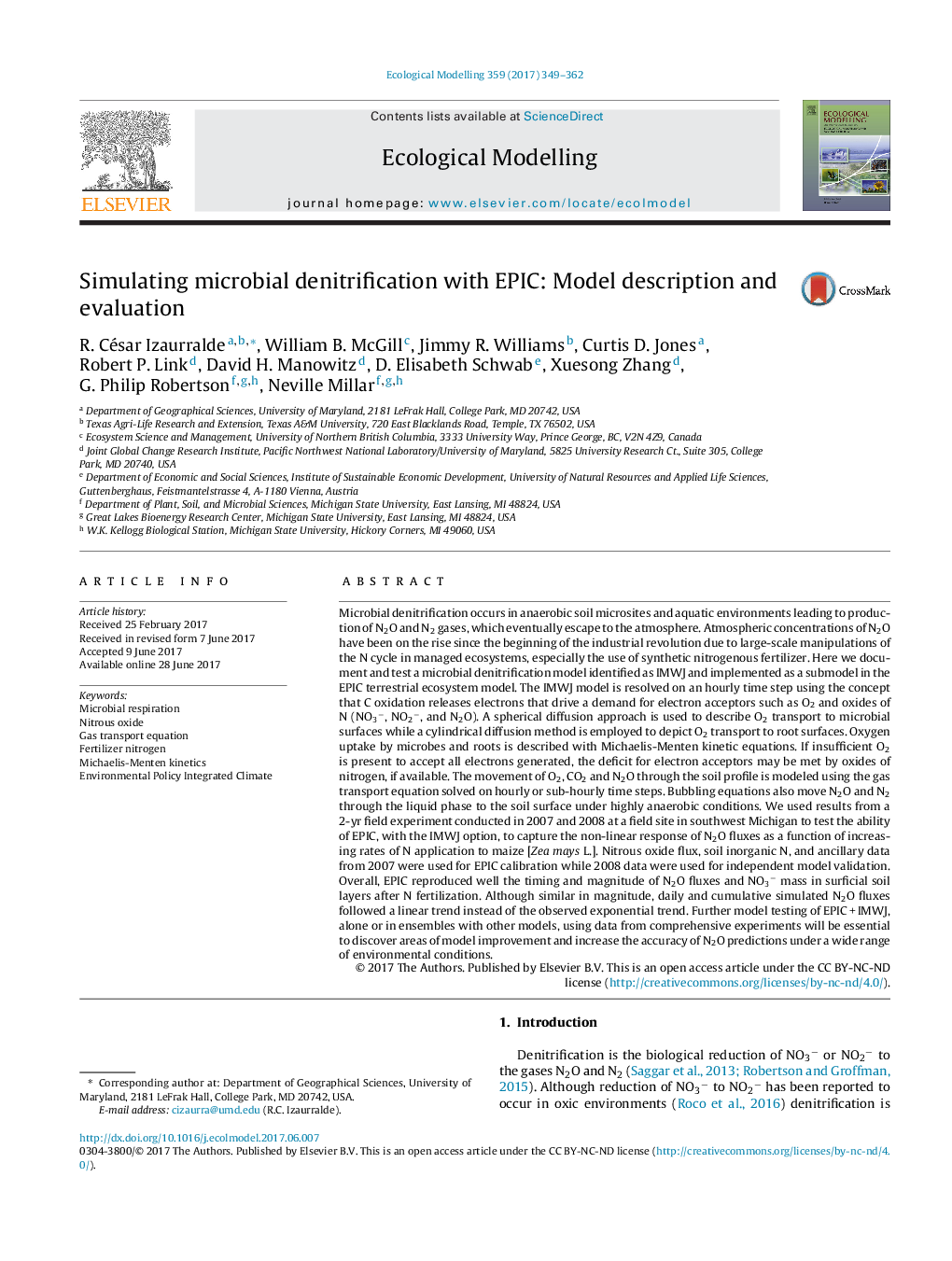| کد مقاله | کد نشریه | سال انتشار | مقاله انگلیسی | نسخه تمام متن |
|---|---|---|---|---|
| 5742146 | 1617388 | 2017 | 14 صفحه PDF | دانلود رایگان |

- We document a microbial denitrification model based on biology, chemistry, and physics.
- Electrons from oxidation of C beyond those accepted by O2 drive denitrification.
- The model was incorporated as a submodel of the terrestrial ecosystem model EPIC.
- Evaluation used data from an N rate experiment showing exponential N2O responses.
- Predictions corresponded well with observations but were linear instead of exponential.
Microbial denitrification occurs in anaerobic soil microsites and aquatic environments leading to production of N2O and N2 gases, which eventually escape to the atmosphere. Atmospheric concentrations of N2O have been on the rise since the beginning of the industrial revolution due to large-scale manipulations of the N cycle in managed ecosystems, especially the use of synthetic nitrogenous fertilizer. Here we document and test a microbial denitrification model identified as IMWJ and implemented as a submodel in the EPIC terrestrial ecosystem model. The IMWJ model is resolved on an hourly time step using the concept that C oxidation releases electrons that drive a demand for electron acceptors such as O2 and oxides of N (NO3â, NO2â, and N2O). A spherical diffusion approach is used to describe O2 transport to microbial surfaces while a cylindrical diffusion method is employed to depict O2 transport to root surfaces. Oxygen uptake by microbes and roots is described with Michaelis-Menten kinetic equations. If insufficient O2 is present to accept all electrons generated, the deficit for electron acceptors may be met by oxides of nitrogen, if available. The movement of O2, CO2 and N2O through the soil profile is modeled using the gas transport equation solved on hourly or sub-hourly time steps. Bubbling equations also move N2O and N2 through the liquid phase to the soil surface under highly anaerobic conditions. We used results from a 2-yr field experiment conducted in 2007 and 2008 at a field site in southwest Michigan to test the ability of EPIC, with the IMWJ option, to capture the non-linear response of N2O fluxes as a function of increasing rates of N application to maize [Zea mays L.]. Nitrous oxide flux, soil inorganic N, and ancillary data from 2007 were used for EPIC calibration while 2008 data were used for independent model validation. Overall, EPIC reproduced well the timing and magnitude of N2O fluxes and NO3â mass in surficial soil layers after N fertilization. Although similar in magnitude, daily and cumulative simulated N2O fluxes followed a linear trend instead of the observed exponential trend. Further model testing of EPICÂ +Â IMWJ, alone or in ensembles with other models, using data from comprehensive experiments will be essential to discover areas of model improvement and increase the accuracy of N2O predictions under a wide range of environmental conditions.
125
Journal: Ecological Modelling - Volume 359, 10 September 2017, Pages 349-362